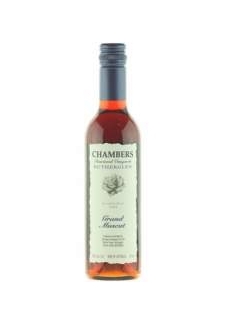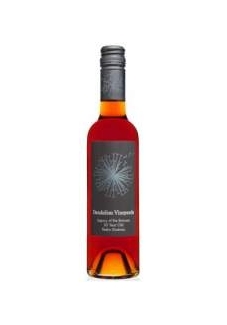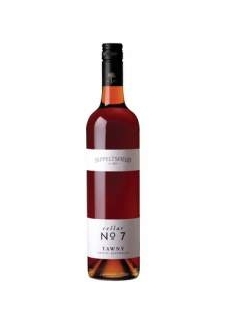FORTIFIED WINES
About the time that Dom Perignon noticed the first bubbles in his quietly cellared bottles, the English were unhappy with shipments of table wines arriving, in barrel, in poor condition. A suggestion was made that by adding brandy to the wine might preserve it better. And it did so!
Not only the addition of brandy preserve the wine and add a smo...
About the time that Dom Perignon noticed the first bubbles in his quietly cellared bottles, the English were unhappy with shipments of table wines arriving, in barrel, in poor condition. A suggestion was made that by adding brandy to the wine might preserve it better. And it did so!
Not only the addition of brandy preserve the wine and add a smooth, alcoholic mouthfeel, but with further time in the barrel, a noticeable change occurred. The porous oak, breathing and allowing a certain amount of evaporation, brought new life to these wines. This was the start of what we know as fortified wines, and long term maturation in oak and careful blending, they've developed into some of the greatest wines on the globe, port from Oporto in Portugal, sherry a name derived from Jerez in Spain, vermouth, marsala and tokay (tokaji) have all proven to be favourite and fashionable aperitifs or digestifs.
In the early days of Australian colonisation, fortified styles similar to ports and sherries were produced with ripe fruit, high levels of sugar, and brandy distilled from base wines. People liked the sweetness and, we suspect, the strength, so for 130 years or more, fortified wines were consumed here in quantities far out measuring standard table wines. Indeed, many winemakers still practising their craft today were apprenticed into the art of making sherry and port because that was what people drank at the time. Despite our shift to a preference for table wines following the Second world War, many consumers still have a liking for chilled dry sherry or an after dinner port with coffee. The custom will not die out because, at their best, these wines are magnificent.
FORTIFIED WINES There are no products in this category
Subcategories
-
Muscat
In Australia, as elsewhere, this variety’s greatest triumph is with its sweet wines. Grown in the Rutherglen district of Victoria, fully ripened grapes are harvested, then are partially fermented and (traditionally) left to mature in barrels. The result? Heaven! Dessert wine of almost ambrosial concentration and never without a tingling tang of acidity to balance it. The Muscats from north-east Victoria are truly one of Australia’s “gifts” to the word of wine.
One of Australia’s most celebrated fortified wines is the renowned liqueur Muscat. Muscat Blanc Petits Grains grapes are left to ripen and even shrivel well beyond normal maturity before being harvested. The Rutherglen region in north-east Victoria is best known for these Muscat and other fortified styles of wine and has an international reputation for the rich, mellow flavours it captures. Rutherglen Muscats are classified as either 'classic', 'grand' or 'rare' (the richest of the lot). These are about the most intense, 'toffee-ish' pudding wines you're ever likely to experience.
-
Sherry ~ Solera
Fine Sherry comes from the Jerez region of southern Spain, just above the Straits of Gibraltar. The region takes its name from the town of Jerez or, to give it its full name, Jerez de la Frontera. In ancient times it was the frontier town between the Christian occupied north and the Moorish occupied south, until reunited under the Christian Kingdom after the expulsion of the Moors. The wines of the region have been known outside Spain for many centuries. In fact, Sir Francis Drake (El Draco to the Spanish), when he sacked the town of Cadiz confiscated some 3000 casks of Sherry from the Quay, and took them home.
There are also many references to Sherris and Sherris Sack in Shakespearean works; the wine however must have been quite different from the Sherry of today because it was not fortified.Sherry today is a quite unique wine and can range from very pale and very dry to very dark and very sweet. It is, however, a white wine and produced from a single grape variety - the Palomino - with just a few subsidiary varieties for the sweeter wines.
The hot climate in southern Spain, together with the rather chalky soil, produces grapes very high in sugar which convert into a wine with a very high natural alcohol content of 14% or more. The chalky soil is responsible for a rather noticeable acidity in the wine. These features produce one of the most popular styles: the dry Fino and Manzaniia Sherries. Besides the unique climate and soil conditions, the methods of sherry production are quite unique, the style of maturation and manufacture differing greatly from other wine-producing regions.
Generic Types - Sherry styles are produced in South Africa, Australia and Cyprus. Of these, South African is closest to the Sherry from Jerez. South African producers use the Palomino grape, just as they do in Spain, and they have the good fortune that Flor grows on some of their wines - with the result that some very good wines appear.
Australian Wine has improved immensely in recent years. Many of the drier styles are produced on a Flor system. New EC Laws protect Spanish Jerez Sherry - all others must be labelled 'Liqueur Wine'.
A change to the Wine Australia Corporation Act 1980 means that from now on, ‘Sherry’ produced in Australia must no longer be called “sherry” but can be called ‘Cream, crusted/crusting and Solera Fortified’.
-
Tawny ~ Vintage
In Northern Portugal, among the Douro mountains and along the upper reaches of the Douro river, grow the vines which give the world one of its most revered wines. Port, as an unfortified wine, would be remarkable only for its blackish colour and unpalatable taste. Its secret lies in fortification and blending. That the grapes which provide the base wine should contain the qualities which, after years of maturation, will become apparent in the wine, is nothing short of incredible.
In the upper Douro there is almost no soil: the heavy schistose surface which is a combination of compressed clay and granite, and the steep hillsides combine to form land which is most unfavourable to the grape. The climate, also, is extreme. In this region, close to the Spanish border and cut off from the influence of the Atlantic by mountains, summers are extremely hot with temperatures commonly exceeding 38°C (100°F). In winter, up to 127cm (50ins) of rain may fall, much of which would just run off the slopes were it not for the elaborate terracing which the Port growers have built. The terracing, which is being constantly extended into new areas and unplanted tributaries of the Douro, has enabled the formation of soil but, even so, it is sometimes necessary to use explosives to break the ground before planting.
From this extraordinary land come the Port grapes - 30 or 40 varieties of them - which are still trodden by teams of men in a cement trough called a lagar. Fermentation takes place in the growers farm, or quinta. The young, partially fermented wine is run into barrels which are quarter-filled with brandy. This stops the fermentation, strengthens the wine and preserves a considerable proportion of the natural sugar. No sweetening is ever added to Port. The wine is then taken down to Opporto where the shippers, many of whom have their own quintas, store the wine in oak barrels called pipes.
One of Australia’s best known fortified wines traces its genesis back to a barrel of fine fortified wine set aside by the Seppelt wine making family in the Barossa in 1878. Patriarch Benno Seppelt decreed that this barrel, the finest of that vintage, should remain untouched for one hundred years. In 1978 the family released the first of the precious Para Liqueurs. In succeeding years, the family and subsequent corporate owners have continued the tradition, releasing limited bottles of Para Liqueur Vintage tawny wines on the 100th anniversary of their creation.
Wine critic Huon Hooke from the Sydney Morning Herald newspaper summed up Para’s importance to Australia’s wine community in a few succinct words: “Like the ’51 Grange, like a Streeton painting, a Melba recording, a Bradman bat, or a Lawson short story, it’s part of the Australian ethos. A true icon.”
A change to the Wine Australia Corporation Act 1980 means that from now on, ‘Port’ produced in Australia must no longer be called “Port” but can be called ‘Vintage’.
-
Tokay
Tokay styles are made from the Frontignac variety (either white, red or brown) and Muscadelle variety respectively. The grapes are allowed to ripen and shrivel (raisin) on the vines before picking and crushing. The sugar level of the juice is higher than other wines and when the sugar level starts to drop, spirit is added, stopping fermentation and resulting in wines that are very high in sugar (300 grams or more per litre). The fortified juice is stored and matured in oak casks (sometimes using the solera system), where evaporation plays an important role in the concentration of flavours and complexity of these wines.
Tokay, also known as Tokaji, are specialty dessert wines that are produced in Tokaj, a region located in northeastern Hungary. Tokay wines are produced with late-ripened (shriveled) grapes that are affected by favorable fungus known as the Noble Rot (Botrytis Cinerea). Among the specific varieties of grapes that are approved for the production of Tokay wines include Furmint, Hársevelu and Sárga Muskotály. One of the best and rarest Tokay wine produced from these grapes is called Aszú.
ABN: 11 806 263 393
Liquor Licenses
337 526 06
360 674 16




